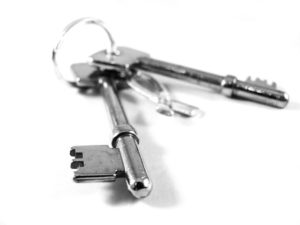If “budget” is on your short list of words describing a restrictive life style – one that will limit your freedom – you’re misguided. Many people who struggle with financial freedom simply don’t know where their money goes. Many also don’t understand that if they planned the where and how their dollars are spent, they would be much more likely to achieve their financial goals and have a stronger financial foundation on which to build. In that sense, a budget actually creates freedom – freedom from worry and confusion.
If you’ve never tracked your spending, you probably don’t know where all of your money goes. When it comes to tracking spending, it’s not too difficult to keep track of regular fixed expenses such as a car payment, or rent and mortgage payments, as these amounts typically don’t change month to month. It’s the flexible or occasional spending dollars that often drift away, because flexible spending is difficult to keep in our heads (and our wallets.) Most people assume they know how much they spend on things like groceries, eating out, clothes, and entertainment, but without a regular tracking system and a budget in place, it’s not uncommon to underestimate the dollars actually spent.
Pause from reading for a moment and ask yourself what you spent on groceries last month. What about your trips to the hair salon? How about those lunches out during the week? You took your best guess – right? But, if you’re like a lot of people, you really don’t know how much of your money is going to these discretionary expenses and you likely underestimated. These “lazy” dollars can add up to a lot of money over time, which is why a budget is important. A budget is a plan for your dollars – all of them.
Once you have a budget in place, it may feel restrictive to limit your spending on things you once simply bought without thought, but those feelings will surrender to the enthusiasm and freedom you experience once you’ve built up some savings toward more lasting life goals.
There are a lot of budgeting tools online to get you started, (MyMoney.gov, and the National Endowment for Financial Education to name a few) but few of them provide guidance for how much is a “reasonable” amount for each expense category. It may be beneficial to review the average average monthly budget percentages by household in your area. For example, here is the average breakdown for the Midwest region in 2015 compiled by the U.S. Bureau of Labor Statistics(PDF) in August 2016:
Housing (includes utilities, furniture, etc.): 29%
Transportation (includes insurance): 16%
Food (both at home and away from home): 12%
Personal insurance, Social Security and Pensions: 10%
Savings: 8%
Healthcare (includes health insurance): 8%
Other (reading, education, personal care, tobacco): 6%
Entertainment: 5%
Clothing: 3%
Giving: 3%
These percentages have been rounded to the nearest whole number.
Again, these are averages, not recommendations, but these will provide you a better understanding of how households manage money in various expense categories.
It’s also important to keep in mind that these are the averages across the entire Midwest. Your personal situation may require you to spend more than the average in some categories and allow you to spend less on others. For example, if someone in your family has dietary restrictions, you may need to budget more than the average for groceries. If you live in an area with inexpensive housing, you’ll likely be able to keep your housing costs less than the average of 29%. These percentages are simply meant to provide some basic framework.
 To get you started, track all of your spending for a couple of weeks and then sit down and write down all of your monthly expenses. Include all the categories listed above – the fixed expenses such as rent and car payments, as well as a realistic monthly amount for the flexible expenses you tracked such as groceries and entertainment. Hopefully, your spending is less than your net monthly income. Calculate what percent of your net income goes to each living expense category and see how your household spending compares to Midwest averages. Keep in mind, the one month you used to track and compare yourself to these averages may have more (or fewer) dollars coming in or going out than other months throughout the year. But this exercise will certainly provide you the opportunity to become more aware of your spending and motivate you toward saving for your future financial security.
To get you started, track all of your spending for a couple of weeks and then sit down and write down all of your monthly expenses. Include all the categories listed above – the fixed expenses such as rent and car payments, as well as a realistic monthly amount for the flexible expenses you tracked such as groceries and entertainment. Hopefully, your spending is less than your net monthly income. Calculate what percent of your net income goes to each living expense category and see how your household spending compares to Midwest averages. Keep in mind, the one month you used to track and compare yourself to these averages may have more (or fewer) dollars coming in or going out than other months throughout the year. But this exercise will certainly provide you the opportunity to become more aware of your spending and motivate you toward saving for your future financial security.
Now that sounds like freedom.

